Elementary Program
“MCS is a great school because kids have a lot of freedom in the classroom to choose work they are interested in doing. This makes school a lot more fun.”
- A.G., MCS Student, age 10
“MCS is a great school because kids have a lot of freedom in the classroom to choose work they are interested in doing. This makes school a lot more fun.”
- A.G., MCS Student, age 10
Class Size
18 - 24
Lower Elementary
Grades 1 - 3
Upper Elementary
Grades 4 - 6
Adult / Student Ratio
1 / 12
Schedule
Monday- Friday 8:00 - 3:00
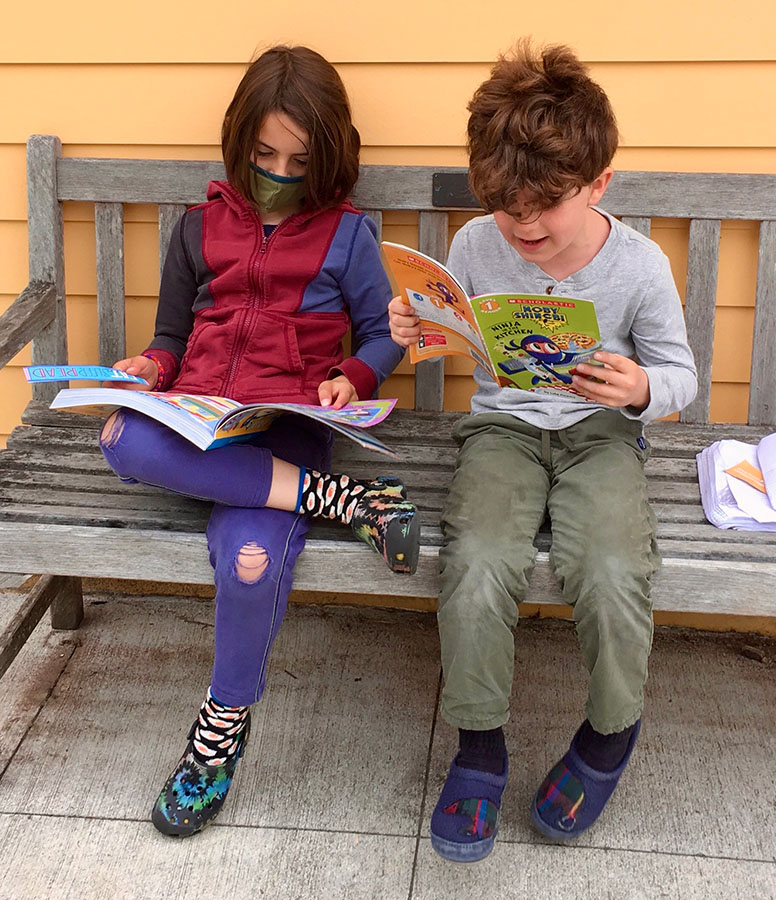
Based upon the concept of cosmic education, the elementary program honors the child’s innate desire to explore, examine, and make sense of the world. The curriculum connects inter-related parts and helps the children to place themselves in the myriad fascinations of life.
The Materials
The Montessori materials are beautifully handcrafted and are displayed on low, open shelves. These unique materials are tools to stimulate the child into logical thought and discovery. Each piece of material has a specific purpose and is presented in a manner that will enable children to direct their own learning.
Each piece presents one concept or idea at a time and has what is known as a “control of error.” If the child has done something incorrectly, it will be self-evident. The geometric shape, for example, won’t fit the hole; or the last label will not match the last picture. In this way, children learn to work with increasing independence, taking control and responsibility for their own learning.
The Great Lessons
The Great lessons are connected stories that span the enormous historical frames of time and space. They serve as a starting point for further exploration and as a spark to illuminate the majesty of the world around the child and the possibility of the child’s potential as an active and important agent of change.
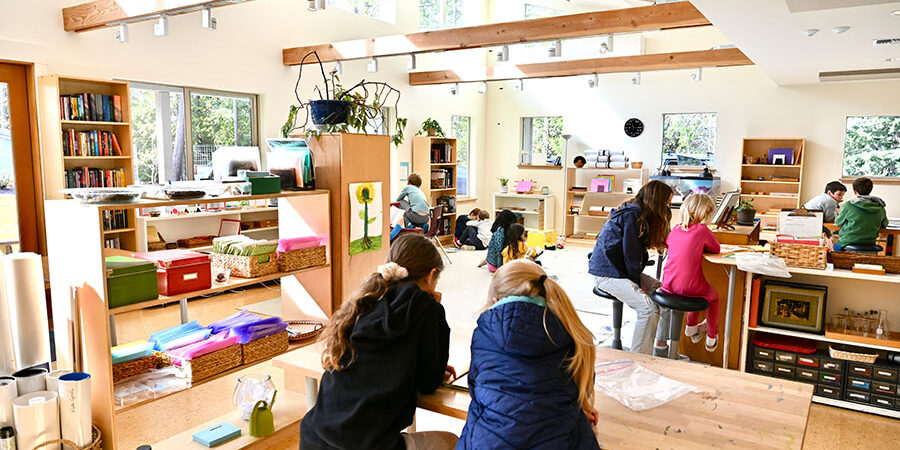
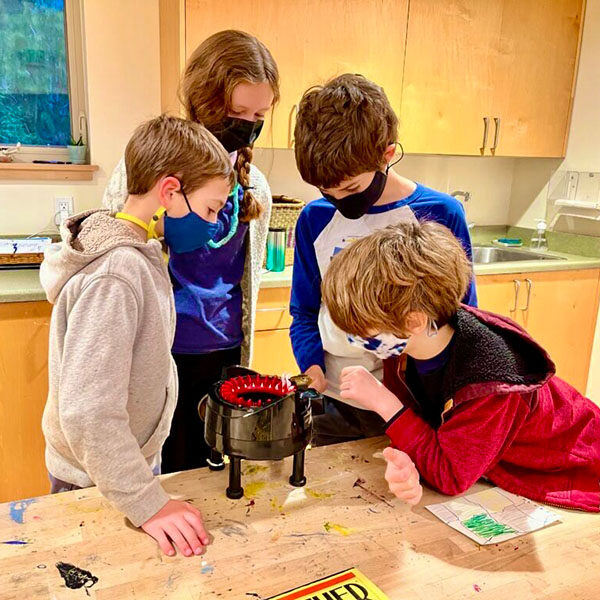
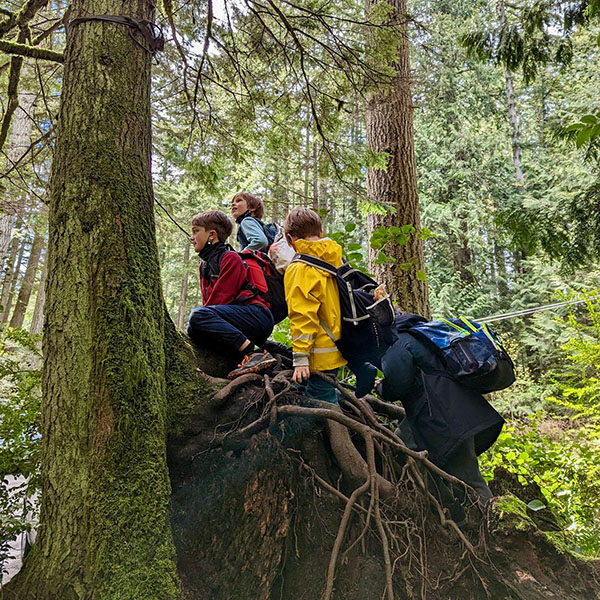
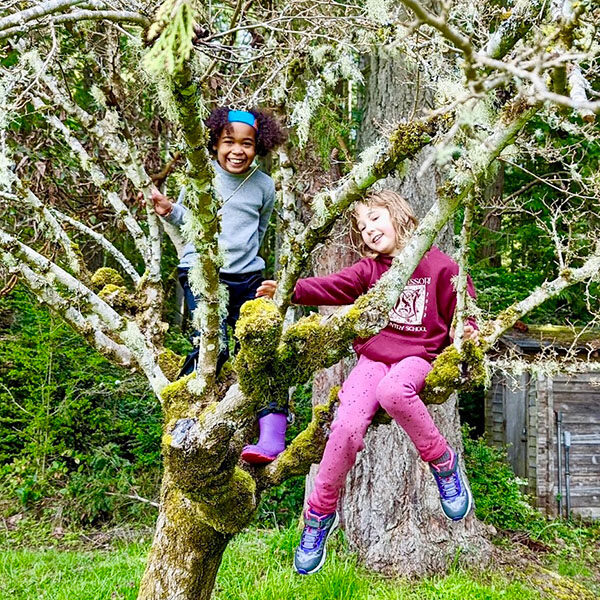
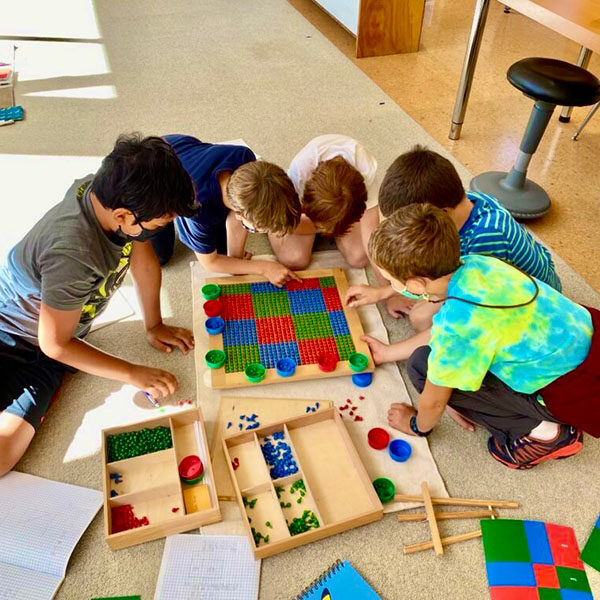
Curriculum
The study of history begins with the development of the solar system and life on earth. Creation stories from various cultures are presented. A timeline of evolution is used as a beginning point for the botanical and zoological studies. The use of the timeline gives the child a scientific representation of the length of time life was developing on earth prior to the arrival of the human species.
Following the study of the evolution of non-human life on earth, the child begins to study the evolution of humans and the development of early civilizations (Egyptian, Roman, native American, etc.) and vertical studies of how a specific need has been met through time (such as housing, writing, transportation, mathematics). Senior Elementary classes delve into the history of the United States.